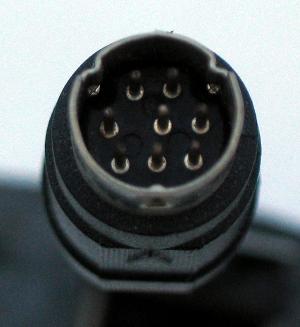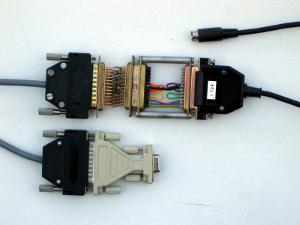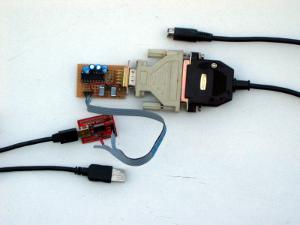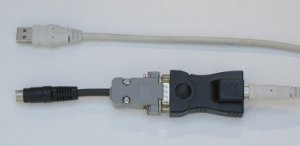Connect your Epson PX-4 or PX-8 to a PC
Connecting and exchanging data with a PX-4 or PX-8 (HX-40 or
HX-80 if you are in the USA) has always been a bit of a problem.
You had to find or buy a special cable from Epson or solder one
yourself.
Nowadays some extra complications arise; the Epson file
transfer software runs on DOS only and serial ports are scarse on
modern machines. The PX8vfs floppy emulator
only works properly on 80486 class machines and lower and
have a 16550 style UART.
The latter may be solved by tweaking
Dosbox, the former is
solved here.
The goal
There are several reasons to connect the PX-4 or PX-8 to a PC;
- transfer files using the FILINK protocol via the RS-232 port; Use the
PX-4/8 RS232C port for this. See the
Filink page for more info on this.
- 'print' files via the SERIAL port; Use the PX-4/8 SERIAL port for
this.
- utilize the PC as floppy emulator using the epsp protocol;
Use the PX-4/8 SERIAL port for this.
During startup a message is send over the SERIAL port, so the PX-4/8
knows what is connected and sets the Baud rate accordingly; printer: 4800 Baud,
floppy-terminal: 38400 Baud.
The connector
|
Epson used a
mini-DIN connector for the serial ports on the
PX-* computers. The very same connector as the Macintosh RS-422
port the mouse and keyboard of some Sun workstations, a 8-pin
mini-DIN. Pin numbering and function (for the plug at the right) is:
2 1 1 Signal GND
2 TxD
5 4 3 3 RxD
4 RTS
8 7 6 5 CTS
6 DSR
7 DTR
8 DCD
Shield Protective GND
|

|
The connection
|

|
At the left is a image it the contraption I occasionaly assemble
to connect a DOS PC to a PX-* for usage with FILINK. All this
could be incorporated into one special cable, but if I made
a custom cable for every application, I would need a lot more
of them.
On the right the Epson #724 cable. Then a DIY null modem,
a gender changer (F-F), a straight 25p. cable and finally a
25p. to 9p. converter (25M-9F).
Some more info on Filink
and null-modem converter.
Top plug goes to PX-4/8, bottom plug to the PC RS-232c
|
|
The contraption also works with the simulator, but on my
modern PC with Linux, there is no serial port. On the right
again the Epson #724 cable, a 25p. to 9p.converter (25F-9M),
a level shifter, a USB-serial breakout board and a USB cable
(mini-B to A). USB-serial converters are available, but you
need a gender changer and null-modem too.
Top plug goes to PX-4/8, bottom plug to a PC USB port
|

|
|

|
A more modern and compact solution is a commercial
Serial-to-USB converter and a simple conversion cable. I
bought the Serial-to-USB converter from Sparkfun as "USB to RS232 Converter",
but there might be (cheaper) others. The short cable is custom made. It is a
special variant of #724; "#724-F9".
The PX-4/8 requires some special voltages on the handshake lines, but does
not provide those, so a full loopback is not possible (CTS, DSR and DCD
require a negative voltage. RTS can be connected to DTR for a positive voltage).
Top plug goes to a PC USB port, bottom plug to the PX-4/8.
|
This cable is wired as:
PX 8p. PC 9p. DE-9
CG E ------- (shell)
GND 1 ------- 1
TxD 2 ------- 2
RxD 3 ------- 3
RTS 4 ------- 4
CTS 5 ------- 5
DSR 6 ------- 6
DTR 7 ------- 7
DCD 8 ------- 8
|
Some background
The handshake lines are a remnant from the times modems were mostly analog
and signalled the state of the line with descrete signal lines. Since
the introduction of the
Hayes AT command set,
these lines were only there to be backward compatible. For the PX-4/8 -
PC usage, certainly when you use a real RS-232 port, it is better to loop
them back, certainly at the PC-side. The PX-4/8 doesn't really care for
the handshake lines.
Latest update: 2012-02-03
e-mail



